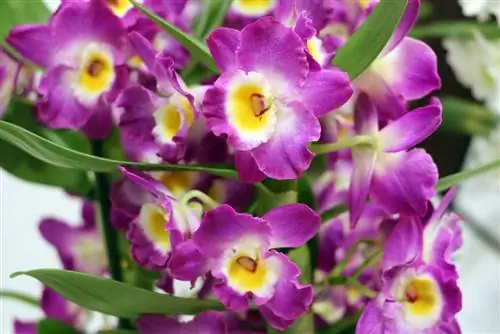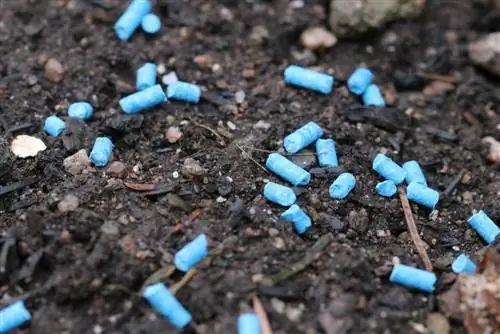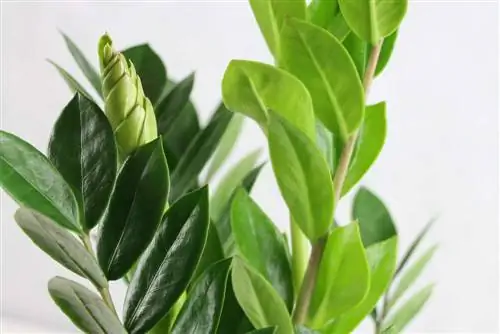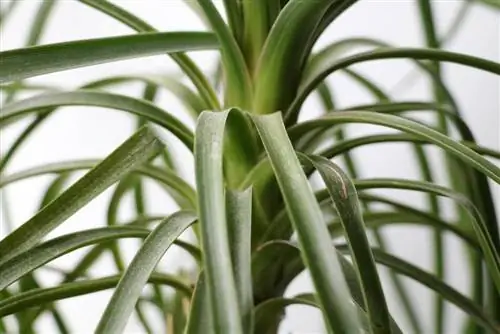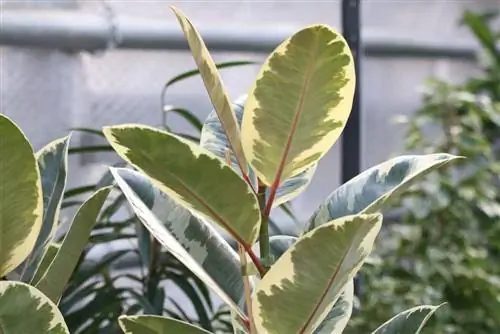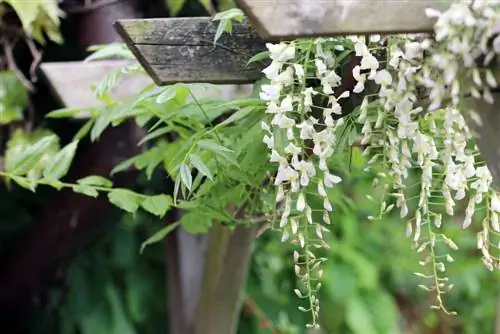- Author admin [email protected].
- Public 2023-12-17 03:39.
- Last modified 2025-06-01 06:48.
Parents and pet owners take a critical look at the orchid and weigh up whether the houseplant is really suitable. Hardly any other plant has as many myths and legends as the orchid, which originally grows in the rainforests and has the botanical name “Orchis” (from the Greek, in German “Hode”) because of its root tuber. The plant’s enormous biodiversity is equally legendary. There are over 30,000 known species of orchids, some of which are poisonous, but others of which are completely harmless. It is worth knowing that touching the plant by babies, small children or pets does not cause any reactions. He alth-related consequences only arise if parts of the plant and its flowers are consumed.
Immediate help at the poison control center
You can get immediate help here: the poison control centers
Myths and legends about enchanting orchids
You will not find poisonous orchids in hardware stores or German garden centers. Problems can only arise with wild plants of unknown species taken from nature. If you buy your orchid in this country, you can place it in your house or apartment without hesitation and enjoy the wonderful flowers in their true colors.
Tip:
Put your orchids out of the reach of children and you can be sure that the wonderful plant will not become a danger to your offspring. A window sill or an elevated location on a sideboard is an ideal place for the orchid. It is important that you choose a location with sufficient daylight. Orchids love it bright and bloom for a particularly long time when they are illuminated by the sun and thus pampered by light.
How dangerous are orchids especially for babies?
As already explained in the previous paragraph, the orchid species available in this country are non-toxic. However, the care instructions label already states that the plant and its parts are not intended for consumption. If flowers or stems and leaves of the orchid get into the mouth and are salivated, he alth problems and visible symptoms of poisoning can occur, even with non-toxic varieties. Babies' small organisms in particular react very strongly to the plant substances, which lead to headaches, nausea and vomiting. However, the orchid is no exception here, but rather joins the spectrum of inedible houseplants that are not suitable for consumption.
Note:
If a baby or toddler has nibbled on an orchid, you should watch it carefully and, if in doubt, consult a doctor immediately. If the plant parts don't get into your stomach and you immediately notice your child's curiosity about eating them, you don't need to worry about any he alth risks.
Orchids available in stores here:
- contain no toxic substances.
- are nevertheless not suitable for consumption.
- should be placed out of the reach of children/pets.
- are known to have an effect if accidentally consumed.
- should come from organic nurseries.
Dangerous plant parts of orchids
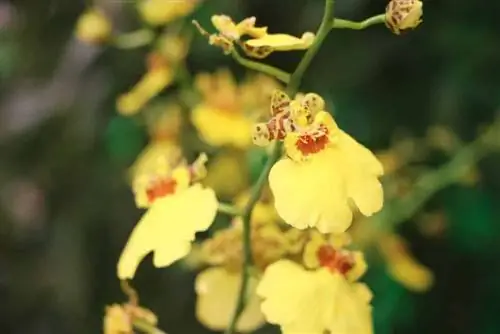
The foliage and flowers generally do not produce any harmful reaction. The situation is different with the tuber, whose bitter substances attack the liver and cause permanent liver damage. It is therefore advisable that you not only place your orchids out of the reach of small children, but also in a well-protected planter that is out of reach of the nimble fingers of children. Small children in particular love playing in the soil and tend to dig up the tuber and then stick their fingers in their mouths. If the root is damaged and the bitter substance gets on children's hands, this can lead to severe diarrhea and nausea with vomiting. In the long term and with repeated contact of toxins with saliva, the liver is at risk, which should not be underestimated.
Note:
Poisoning from eating orchid root parts is not directly related to poisonous species. The tuber generally contains bitter substances, which causes irritation in the stomach, intestines and liver.
Orchids - a risk in the household with small children and babies?
This question can generally be answered with no. Because if you buy your orchids from an experienced breeder or from a garden supply store or hardware store, you won't get access to the few poisonous species. A careful location away from children's hands ensures that your children do not come into contact with the plant. The temptation to put the colorful flowers in their mouths and chew on them is great, especially for babies. If you counteract this, you can sit back and relax and not have to worry about any danger.
Some orchids have been shown to contain alkaloids. These produce a hallucinogenic effect and temporarily lead to dizziness and visual disturbances. Before buying, ask whether the orchid you prefer is a species with alkaloids and, in this case, exclude the purchase. A well-known hallucination-causing species that is occasionally available in garden centers is Oncidium cebolleta. Other conventional varieties do not contain any hallucinogenic substances and can therefore find a place in your living room, kitchen or attractive winter garden without worrying about the he alth of your little ones.
Tip:
Don't be over-anxious. If you are more unsure, we recommend consulting a botanist or purchasing your orchid directly from the breeder. Here you not only get information about the species and its poison content, but you can also find out in detail about all the important details about the plant.

